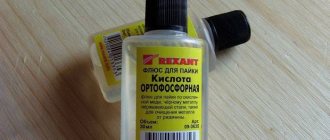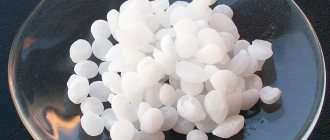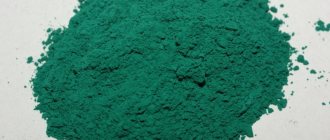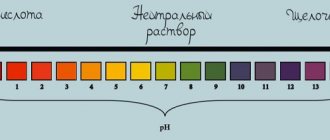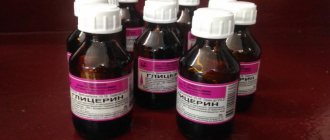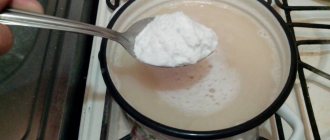Many housewives keep a jar of ammonia, because it can be used to remove stains, return clothes to their original whiteness, and even fertilize indoor plants. The list goes on, and it becomes clear that the substance really has beneficial properties.
However, many people call ammonia alcohol ammonia or simply ammonia. In fact, ammonia, ammonia and ammonia are different substances. These substances are not the same thing; they have different formulas, origins, and different state of aggregation. But there is also a common feature - the characteristic, pungent smell of ammonia.
What is ammonia
An aqueous solution of ammonia or ammonia (NH4OH, ammonia hydroxide or monohydrate) is a clear, colorless liquid with a pungent odor, which is used as a medicine and for household needs. In large quantities, NH4OH is poisonous, but a small dose of the drug can be used as a stimulant and irritant. The main use of alcohol is medicine. It can be used to revive a person who faints; surgeons use it to treat their hands before surgery. In addition, this drug has found wide application in cosmetology.
Story
Ammonia was first isolated in its pure form by J. Priestley in 1774, who called it “alkaline air”. Eleven years later, in 1785, C. Berthollet established the exact chemical composition of ammonia. Since that time, research has begun around the world on producing ammonia from nitrogen and hydrogen. Ammonia was very necessary for the synthesis of nitrogen compounds, since their production from Chilean saltpeter was limited by the gradual depletion of the latter's reserves. The problem of decreasing nitrate reserves became more acute towards the end of the 19th century. Only at the beginning of the 20th century was it possible to invent a process for the synthesis of ammonia suitable for industry. This was carried out by F. Haber, who began working on this problem in 1904 and by 1909 had created a small contact apparatus in which he used increased pressure (in accordance with Le Chatelier’s principle) and an osmium catalyst. On July 2, 1909, Haber tested the apparatus in the presence of K. Bosch and A. Mittasch, both from the Baden Aniline and Soda Works (BASF), and obtained ammonia. By 1911, K. Bosch had created a large-scale version of the apparatus for BASF, and then the world's first ammonia synthesis plant was built and put into operation on September 9, 1913, which was located in Oppau (now a district within the city of Ludwigshafen am Rhein) and belonged to BASF. In 1918, F. Haber won the Nobel Prize in Chemistry “for the synthesis of ammonia from its constituent elements.” In Russia and the USSR, the first batch of synthetic ammonia was produced in 1928 at the Chernorechensky Chemical Plant.
Compound
People are often interested in the question in what situations ammonia is used and what ammonia is. The chemical compound hydrogen nitride, or ammonia, is a colorless gas with a pungent odor. It is obtained at high temperature using a catalyst from air nitrogen and hydrogen. When water is added, a solution of ammonia is obtained. Ammonium hydroxide or ammonia tincture has a pungent odor and has a strong alkaline reaction. The composition of ammonia includes 10% aqueous ammonia solution.
Methods of obtaining
Ammonia is produced by the interaction of hydrogen and nitrogen molecules in industry. The production technique is called the Haber process. The entire reaction proceeds with the release of heat and a decrease in volume. Thus, the reaction is carried out at reduced ambient temperature and elevated pressure. The balance shifts to the right. Under these conditions, the reaction rate is low, and as the temperature readings increase, the rate begins to increase. To carry out the reaction safely, special equipment is required to maintain elevated pressure.
To accelerate the achievement of an equilibrium state, catalyst materials are used - iron with a porous composition and a certain percentage of additives.
In all respects, the process of producing ammonia occurs at a temperature of 500 degrees Celsius and in the presence of high pressure, reaching 350 atmospheres. The percentage of production if these factors are met will be 30 percent. In industry, the process is circular. The composition is cooled and ammonia is removed, and unreacted nitrogen and hydrogen are returned for re-synthesis. This method of ammonia extraction in industry is considered the most economical.
In laboratory conditions, ammonia is produced through the action of alkalis. The chemical element is obtained by heating ammonium with lime. To dry ammonia, use lime and soda.
Due to the physical and chemical properties of ammonia, it is successfully used in industry, manufacturing, medicine, chemistry and many other areas of human activity.
Formula
Many people mistakenly believe that ammonia, ammonia, ammonia, and hydrogen peroxide are similar substances, but this is not so. Some of the drugs may have the same smell, although the chemical formula and method of preparation are different. The alcohol in question, unlike ammonia gas, is a colorless liquid with a pungent odor. This substance has the formula: NH4OH. It is rare to find another one like this - NH3∙H2O. This notation is used for a 10% solution.
Examples of problem solving
| Exercise | Write a formula for the compound of iron and sulfur if the mass ratio of the elements in it is m(Fe):m(S) = 7:4. |
| Solution | In order to find out in what relationships the chemical elements in the molecule are located, it is necessary to find their amount of substance. It is known that to find the amount of a substance one should use the formula: |
Let's find the molar masses of iron and sulfur (we'll round the values of relative atomic masses taken from D.I. Mendeleev's Periodic Table to whole numbers). It is known that M = Mr, which means (S) = 32 g/mol, and M(Fe) = 56 g/mol.
Then, the amount of substance of these elements is equal to:
n(S) = 4 / 32 = 0.125 mol.
n (Fe) = m (Fe) / M (Fe);
n (Fe) = 7 / 56 = 0.125 mol.
Let's find the molar ratio:
n(Fe) :n(S) = 0.125: 0.125 = 1:1,
those. The formula for the compound of copper and oxygen is FeS. It is iron(II) sulfide.
| Exercise | Calculate the mass of 2 moles of hydrogen gas and the number of molecules in this amount of substance. |
| Solution | Let's write the formula for calculating the amount of substance: |
Then, the mass of the substance can be calculated as:
Let's find the molar mass of molecular hydrogen (the value of the relative atomic mass taken from D.I. Mendeleev's Periodic Table, rounded to the nearest whole number). It is known that M = Mr, which means (H2) = 2×Ar(H) = 2×1 = 2 g/mol.
Let us determine the mass of 2 moles of hydrogen gas:
The number of molecules is denoted by N and is calculated by the formula:
This is a dimensionless quantity. Let's find the number of nitrogen molecules in 2 moles of this substance:
N(H2) = 2 × 6.023 × 10 -23 = 12.046 × 10 -23 molecules.
Source
What is the difference between ammonia and ammonia
The main difference between NH4OH and hydrogen nitride is their initial aggregative state. Ammonia is a colorless gas that liquefies at -33 degrees Celsius. Ammonia is a liquid that is often called ammonia solution. The difference between the substances is their area of application. Ammonia is the main product used in the chemical industry. This gas is often taken:
- in the production of alcohol;
- as a refrigerant to maintain the operation of industrial and domestic systems;
- for the production of fertilizers, polymers, nitric acid, soda;
- during construction;
- for the manufacture of explosives.
Ammonia monohydrate has a narrower use, mainly as a medical antiseptic. In addition, the solution is often used by housewives to remove stains from clothes, to clean gold and silver, and as food for garden and indoor plants. The main similarity of these products is that they can smell unpleasant due to the high content of ammonia salts.
Item Description
In the liquid form of ammonia, the molecules are connected by hydrogen bonds. The temperature, viscosity and density of ammonia are significantly lower compared to water. The boiling process starts at 33 degrees, and the burning or melting process starts at 77 degrees Celsius. The conductivity and dielectric constant of ammonia are low. Consequently, the bond strength in the liquid state is low.
Similar to water, ammonia associates in its liquid state due to the presence of hydrogen bonding. The transition of the chemical composition to the state of a colorless liquid with a density of 681 kilograms per cubic meter is rapid. There is practically no current conductivity in this state.
Properties of ammonia
During the breathing process, ammonia hydroxide vapors enter the body, and the substance actively begins to interact with the trigeminal nerve, while reflexively stimulating the respiratory center. A concentrated solution can cause colliquation (dissolution, softening) of microbial cell proteins. The remedy is also often used as an ambulance to induce breathing and bring a person out of fainting. In addition, ammonia solution:
- when applied externally, it improves tissue regeneration, dilates blood vessels, stimulates the outflow of metabolites;
- has an antiseptic effect;
- has an irritating effect on skin exteroceptors;
- block the flow of pain impulses from pathological foci;
- provokes local release of kinins, prostaglandins;
- affects the activity of the heart and the tone of the vascular walls;
- reduces hyperalgesia, muscle tension, spasms, providing a distracting effect;
- when the drug is inhaled, blood pressure increases;
- suppresses foci of excitation;
- promotes rapid release of sputum;
- influencing the vomiting center, increases excitability;
- oral administration in small doses stimulates the secretion of glands.
Liquid
technical brand Atechnical brand Ak
technical grade B
Ammonia - NH3, hydrogen nitride, under normal conditions - a colorless gas with a sharp characteristic odor (the smell of ammonia), almost twice as light as air, poisonous. The solubility of NH3 in water is extremely high - about 1200 volumes (at 0 °C) or 700 volumes (at 20 °C) per volume of water. In refrigeration technology it is called R717, where R is Refrigerant (refrigerant), 7 is the type of refrigerant (inorganic compound), 17 is the molecular weight.
The ammonia molecule has the shape of a trigonal pyramid with a nitrogen atom at the apex. Three unpaired p-electrons of the nitrogen atom participate in the formation of polar covalent bonds with the 1s-electrons of three hydrogen atoms (N−H bonds), the fourth pair of outer electrons is lone, it can form a donor-acceptor bond with a hydrogen ion, forming an ammonium ion NH4+. Due to the fact that the non-bonding two-electron cloud is strictly oriented in space, the ammonia molecule has high polarity, which leads to its good solubility in water.
In liquid ammonia, the molecules are connected to each other by hydrogen bonds. A comparison of the physical properties of liquid ammonia with water shows that ammonia has lower boiling points (tboiling −33.35 °C) and melting points (tmelting −77.70 °C), as well as lower density, viscosity (viscosity of liquid ammonia is 7 times less than the viscosity of water), conductivity and dielectric constant. This is to some extent explained by the fact that the strength of these bonds in liquid ammonia is significantly lower than that of water, and also by the fact that the ammonia molecule has only one pair of unshared electrons, in contrast to two pairs in the water molecule, which does not make it possible to form an extensive network of hydrogen bonds between several molecules. Ammonia easily transforms into a colorless liquid with a density of 681.4 kg/m³, which strongly refracts light. Like water, liquid ammonia is highly associated, mainly through the formation of hydrogen bonds. Liquid ammonia practically does not conduct electricity. Liquid ammonia is a good solvent for a very large number of organic, as well as many inorganic compounds. Solid ammonia is colorless cubic crystals.
Chemical properties
- Due to the presence of a lone electron pair, ammonia acts as a nucleophile or complexing agent in many reactions. So, it adds a proton, forming an ammonium ion:
NH3 + H+ → NH4+
- An aqueous solution of ammonia (“ammonia”) has a slightly alkaline reaction due to the process:
NH3 + H2O → NH4+ + OH−; Ko=1.8×10−5
- Interacting with acids gives the corresponding ammonium salts:
NH3 + HNO3 → NH4NO3
- Ammonia is also a very weak acid (10,000,000,000 times weaker than water) and is capable of forming salts - amides - with metals. Compounds containing NH2− ions are called amides, NH2− are called imides, and N3− are called nitrides. Amides of alkali metals are prepared by treating them with ammonia:
2NH3 + 2K = 2KNH2 + H2
Amides, imides and nitrides of a number of metals are formed as a result of certain reactions in liquid ammonia. Nitrides can be produced by heating metals in a nitrogen atmosphere.
Metal amides are analogues of hydroxides. This analogy is strengthened by the fact that the OH− and NH2− ions, as well as the H2O and NH3 molecules, are isoelectronic. Amides are stronger bases than hydroxides, and therefore undergo irreversible hydrolysis in aqueous solutions:
NaNH2 + H2O → NaOH + NH3 CaNH + 2H2O → Ca(OH)2 + NH3↑ Zn3N2 + 6H2O → 3Zn(OH)2 + 2NH3↑
and in alcohols:
KNH2 + C2H5OH → C2H5OK + NH3
Like aqueous solutions of alkalis, ammonia solutions of amides conduct electric current well, which is due to dissociation:
MNH2 → M+ + NH2−
Phenolphthalein in these solutions turns red; when acids are added, they are neutralized. The solubility of amides changes in the same sequence as the solubility of hydroxides: LiNH2 - insoluble, NaNH2 - slightly soluble, KNH2, RbNH2 and CsNH2 - highly soluble.
- When heated, ammonia exhibits reducing properties. So, it burns in an oxygen atmosphere, forming water and nitrogen. The oxidation of ammonia with air on a platinum catalyst produces nitrogen oxides, which are used industrially to produce nitric acid:
4NH3 + 3O2 → 2N2 + 6H20 4NH3 + 5O2 → 4NO + 6H2O
The reducing ability of NH3 is based on the use of ammonia NH4Cl to clean the metal surface from oxides when soldering:
3CuO + 2NH4Cl → 3Cu + 3H2O +2HCl + N2
By oxidizing ammonia with sodium hypochlorite in the presence of gelatin, hydrazine is obtained:
2NH3 + NaClO → N2H4 + NaCl + H2O
- Halogens (chlorine, iodine) form dangerous explosives with ammonia - nitrogen halides (nitrogen chloride, nitrogen iodide).
- Ammonia reacts with halogenated alkanes through nucleophilic addition, forming a substituted ammonium ion (method for producing amines):
NH3 + CH3Cl → CH3NH3Cl (methyl ammonium hydrochloride)
- It produces amides with carboxylic acids, their anhydrides, acid halides, esters and other derivatives. With aldehydes and ketones - Schiff bases, which can be reduced to the corresponding amines (reductive amination).
- At 1000 °C, ammonia reacts with carbon to form HCN and partially decompose into nitrogen and hydrogen. It can also react with methane, forming the same hydrocyanic acid:
CH4 + NH3 + 1.5O2 → HCN + 3H2O
History of the name
Ammonia (in European languages its name sounds like “ammoniac”) owes its name to the Ammon oasis in North Africa, located at the crossroads of caravan routes. In hot climates, urea (NH2)2CO, contained in animal waste products, decomposes especially quickly. One of the decomposition products is ammonia. According to other sources, ammonia got its name from the ancient Egyptian word amonian. This was the name given to people who worshiped the god Amun. During their rituals, they sniffed ammonia NH4Cl, which, when heated, evaporates ammonia.
Liquid ammonia
Liquid ammonia, although to a small extent, dissociates into ions, which shows its similarity to water:
2NH3 → NH4+ + NH2−
The self-ionization constant of liquid ammonia at −50 °C is approximately 10−33 (mol/l)².
Liquid ammonia, like water, is a strong ionizing solvent in which a number of active metals dissolve: alkali, alkaline earth, Mg, Al, as well as Eu and Yb. The solubility of alkali metals in liquid NH3 is several tens of percent. Some intermetallic compounds containing alkali metals, for example Na4Pb9, also dissolve in liquid ammonia NH3.
Dilute solutions of metals in liquid ammonia are colored blue, concentrated solutions have a metallic sheen and look like bronze. When ammonia evaporates, alkali metals are released in pure form, and alkaline earth metals are released in the form of complexes with ammonia [E(NH3)6] having metallic conductivity. When heated slightly, these complexes decompose into metal and NH3.
The metal dissolved in NH3 gradually reacts to form an amide:
2Na + 2NH3 → 2NaNH2 + H2
The metal amides resulting from the reaction with ammonia contain a negative ion, NH2−, which is also formed during the self-ionization of ammonia. Thus, metal amides are analogues of hydroxides. The reaction rate increases when going from Li to Cs. The reaction is significantly accelerated in the presence of even small H2O impurities.
Metal-ammonia solutions have metallic electrical conductivity; in them, metal atoms decompose into positive ions and solvated electrons surrounded by NH3 molecules. Metal-ammonia solutions, which contain free electrons, are the strongest reducing agents.
Complexation
Due to their electron-donating properties, NH3 molecules can enter complex compounds as ligands. Thus, the introduction of excess ammonia into solutions of d-metal salts leads to the formation of their amino complexes:
CuSO4 + 4NH3 → [Cu(NH3)4]SO4 Ni(NO3)2 + 6NH3 → [Ni(NH2)6](NO3)2
Complexation is usually accompanied by a change in the color of the solution, so in the first reaction the blue color (CuSO4) turns into dark blue (complex color), and in the second reaction the color changes from green (Ni(NO3)2) to blue-violet. The strongest complexes with NH3 are formed by chromium and cobalt in the +3 oxidation state.
Biological role
Ammonia is the end product of nitrogen metabolism in the body of humans and animals. It is formed during the metabolism of proteins, amino acids and other nitrogenous compounds. It is highly toxic to the body, so most of the ammonia during the ornithine cycle is converted by the liver into a more harmless and less toxic compound - carbamide (urea). The urea is then excreted by the kidneys, and some of the urea may be converted by the liver or kidneys back to ammonia.
Ammonia can also be used by the liver for the reverse process - resynthesis of amino acids from ammonia and keto analogues of amino acids. This process is called "reductive amination". Thus, aspartic acid is obtained from oxaloacetic acid, glutamic acid is obtained from α-ketoglutaric acid, etc.
Physiological action
According to its physiological effect on the body, it belongs to the group of substances with asphyxiating and neurotropic effects, which, if inhaled, can cause toxic pulmonary edema and severe damage to the nervous system. Ammonia has both local and resorptive effects.
Ammonia vapors strongly irritate the mucous membranes of the eyes and respiratory organs, as well as the skin. This is what we perceive as a pungent odor. Ammonia vapors cause excessive lacrimation, eye pain, chemical burns of the conjunctiva and cornea, loss of vision, coughing attacks, redness and itching of the skin. When liquefied ammonia and its solutions come into contact with the skin, a burning sensation occurs, and a chemical burn with blisters and ulcerations is possible. In addition, liquefied ammonia absorbs heat when it evaporates, and when it comes into contact with the skin, frostbite of varying degrees occurs. The smell of ammonia is felt at a concentration of 37 mg/m³.
The maximum permissible concentration in the air of the working area of the production premises is 20 mg/m³. Therefore, if you smell ammonia, then working without protective equipment is already dangerous. Irritation of the pharynx occurs when the ammonia content in the air is 280 mg/m³, eyes - 490 mg/m³. When exposed to very high concentrations, ammonia causes skin damage: 7-14 g/m³ - erythematous, 21 g/m³ or more - bullous dermatitis. Toxic pulmonary edema develops when exposed to ammonia for an hour at a concentration of 1.5 g/m³. Short-term exposure to ammonia at a concentration of 3.5 g/m³ or more quickly leads to the development of general toxic effects. The maximum permissible concentration of ammonia in the atmospheric air of populated areas is: average daily 0.04 mg/m³; maximum single dose 0.2 mg/m³.
In the world, the maximum concentration of ammonia in the atmosphere (more than 1 mg/m³) is observed in the Indo-Gangetic Plain, in the Central Valley of the USA and in the South Kazakhstan region.
Application
Ammonia is one of the most important products of the chemical industry; its annual global production reaches 150 million tons. Mainly used for the production of nitrogen fertilizers (ammonium nitrate and sulfate, urea), explosives and polymers, nitric acid, soda (using the ammonia method) and other chemical industry products. Liquid ammonia is used as a solvent.
In refrigeration technology it is used as a refrigerant (R717)
In medicine, a 10% ammonia solution, more often called ammonia, is used for fainting conditions (to induce breathing), to stimulate vomiting, and also externally for neuralgia, myositis, insect bites, and treatment of surgeon's hands. If used incorrectly, it can cause burns of the esophagus and stomach (if taken undiluted solution), reflex cessation of breathing (if inhaled in high concentrations).
Used topically, inhaled and orally. To stimulate breathing and bring the patient out of a faint state, carefully bring a small piece of gauze or cotton wool moistened with ammonia to the patient’s nose (for 0.5–1 s). Orally (only in dilution) to induce vomiting. For insect bites - in the form of lotions; for neuralgia and myositis - rubbing with ammonia liniment. In surgical practice, dilute in warm boiled water and wash hands.
Since it is a weak base, it neutralizes acids upon interaction.
The physiological effect of ammonia is due to the pungent odor of ammonia, which irritates specific receptors in the nasal mucosa and stimulates the respiratory and vasomotor centers of the brain, causing increased breathing and increased blood pressure.
Receipt
The industrial method for producing ammonia is based on the direct interaction of hydrogen and nitrogen:
N2(g) + 3H2(g) ↔ 2NH3(g) + 45.9 kJ
This is the so-called Haber process (a German physicist who developed the physicochemical foundations of the method).
The reaction occurs with the release of heat and a decrease in volume. Therefore, based on Le Chatelier’s principle, the reaction should be carried out at the lowest possible temperatures and at high pressures - then the equilibrium will be shifted to the right. However, the reaction rate at low temperatures is negligible, and at high temperatures the rate of the reverse reaction increases. Carrying out the reaction at very high pressures requires the creation of special equipment that can withstand high pressure, and therefore large capital investments. In addition, the equilibrium of the reaction, even at 700 °C, is established too slowly for its practical use.
The use of a catalyst (porous iron with Al2O3 and K2O impurities) made it possible to accelerate the achievement of an equilibrium state. Interestingly, when searching for a catalyst for this role, more than 20 thousand different substances were tried.
Taking into account all the above factors, the process of producing ammonia is carried out under the following conditions: temperature 500 °C, pressure 350 atmospheres, catalyst. The yield of ammonia under such conditions is about 30%. In industrial conditions, the circulation principle is used - ammonia is removed by cooling, and unreacted nitrogen and hydrogen are returned to the synthesis column. This turns out to be more economical than achieving a higher reaction yield by increasing the pressure.
To obtain ammonia in the laboratory, the action of strong alkalis on ammonium salts is used:
NH4Cl + NaOH = NH3↑ + NaCl + H2O.
Usually, in a laboratory method, it is obtained by gently heating a mixture of ammonium chloride and slaked lime. 2NH4Cl + Ca(OH)2 = CaCl2 + 2NH3↑ + 2H2O
To dry ammonia, it is passed through a mixture of lime and caustic soda.
Very dry ammonia can be obtained by dissolving sodium metal in it and subsequently distilling it. This is best done in a system made of metal under vacuum. The system must withstand high pressure (at room temperature, the pressure of saturated ammonia vapor is about 10 atmospheres) [2]. In industry, ammonia is dried in absorption columns.
Ammonia in medicine
For insect bites, ammonia is used externally in the form of lotions. Possible side effects: with prolonged exposure (inhalation use), ammonia can cause a reflex cessation of breathing. Local use is contraindicated for dermatitis, eczema, other skin diseases, as well as for open traumatic injuries to the skin. With inhalation use - reflex cessation of breathing, with local use - irritation, dermatitis, eczema at the site of application. Topical application is possible only on intact skin. In case of accidental damage to the mucous membrane of the eye, rinse with water (15 minutes every 10 minutes) or 5% boric acid solution. Oils and ointments are not used. If the nose and throat are affected, use a 0.5% solution of citric acid or natural juices. If taken orally, drink water, fruit juice, milk, preferably 0.5% citric acid solution or 1% acetic acid solution until the stomach contents are completely neutralized. Interaction with other drugs is unknown. (Instructions for use)
Application
Ammonia solution is often used as medicine and for household needs. In medicine, the drug is used to relieve fainting and stimulate breathing. For insect bites, apply lotions with the product; for neuralgia, rub the sore spot. Alcohol is used externally to disinfect doctors' hands before surgery. The instructions for use of the drug indicate that the dose of the substance should be selected individually, based on the indications.
Use in everyday life
Ammonia water is useful for removing stains from upholstered furniture and clothing. To clean your favorite item, textile shoes or upholstery, you need to combine a couple of teaspoons of the product with a glass of water and pour the resulting solution onto the stain for a few minutes. Then rinse with cool water. The smell will quickly dissipate and the stains will disappear instantly.
Ammonia monohydrate also works well when removing cockroaches. To do this, add a little product to a bucket of water when washing the floor, furniture and walls (about 1 tsp per liter of water). The pungent smell will drive away uninvited guests, especially if the procedure is done once a week. To prevent your outdoor recreation from being spoiled by mosquito and midge bites, you need to take an ammonia solution with you and spray it around. After this treatment, insects will no longer bother you.
An ammonia solution is also suitable for cleaning silver, gold items, and plumbing items. To get rid of unpleasant black plaque, you need to take water, tooth powder, ammonia monohydrate in a ratio of 5:2:1. Next, the product should be wiped with a soft cloth or gauze soaked in the solution. After this, rinse with water and wipe dry. Jewelry with precious stones and pearls should not be cleaned this way.
For indoor flowers
The use of ammonia solution for plants is based on its high nitrogen content and the absence of ballast substances. The drug in diluted form is an ideal fertilizer for home flowers. To prepare the simplest fertilizer with NH4OH, you need to dissolve one tablespoon of the substance in three liters of water. The resulting solution must be watered at the roots of the plants. If home flowers are affected by aphids, you need to take them out to the balcony and spray them with a solution of fifteen milliliters of alcohol, three liters of water and two drops of shampoo.
In the garden
Ammonia solution is an indispensable assistant in a summer cottage. The drug is often used to replenish nitrogen deficiency and as a preventive measure for diseases of trees, plants, shrubs, and berries. To feed you need 4 liters of water and 50 ml of solution. Plants should be watered with this composition from the moment of planting until the end of June. The product also perfectly repels mosquitoes, aphids, and midges. The farm uses only a technical solution of 25% alcohol.
Ammonia is an excellent fertilizer for plants. Shrubs will respond to the solution with a good harvest: plum, cherry, blackberry, raspberry. The substance must be used to increase growth during the flowering period. Cabbage, zucchini, onions, pumpkin, peppers, potatoes, and eggplants consume the most nitrogen. There are crops that need nitrogen in moderation: cucumbers, tomatoes, beets, garlic, corn, gooseberry and currant bushes.
- Hoop exercises for children and adults. A set of hula hoop exercises at home for weight loss
- How to lose weight with flax seeds
- How to go on a diet and lose weight at home
Application in medicine
Ammonia solution is often used to revive a person and in case of fainting. In addition, the use of ammonia in medicine is possible for:
- poisoning (food, alcohol, toxic);
- neuralgia;
- insect bites;
- headache, toothache;
- hangover;
- myositis;
- joint pain;
- otitis;
- nail fungus.
Ammonia monohydrate has also found wide application in cosmetology. If you use the substance together with glycerin, it will be an excellent remedy for dry skin of the legs, elbows, and hands. A lotion based on these ingredients helps to quickly restore softness and get rid of cracks. The product is also excellent for treating hair; it can be used as a rinse after using shampoo. To do this, dissolve a teaspoon of alcohol in a glass of warm water.
Complexation
Due to their electron-donating properties, NH3 molecules can enter complex compounds as ligands. Thus, the introduction of excess ammonia into solutions of d-metal salts leads to the formation of their amino complexes:
CuSO4 + 4NH3 ⟶ [Cu(NH3)4]SO4. Ni(NO3)2 + 6NH3 ⟶ [Ni(NH3)6](NO3)2.
Complexation is usually accompanied by a change in the color of the solution. Thus, in the first reaction, the blue color (CuSO4) turns into dark blue (the color of the complex), and in the second reaction the color changes from green (Ni(NO3)2) to blue-violet. The strongest complexes with NH3 are formed by chromium and cobalt in the +3 oxidation state.
Instructions for use
To revive a person who has fainted, you need to pour a little ammonia solution onto a cotton swab and bring it to your nose at a distance of 5 cm. Close inhalation of the product is prohibited, because this can cause a burn to the nasal mucosa. If you are bitten by insects, you need to apply lotions. To use the drug to induce vomiting, you should take ammonia in ampoules, pour 10 drops of the product into 100 ml of warm water and give it to the patient to drink orally. For a wet cough, the doctor may prescribe inhalations, but only through a special device.
origin of name
Ammonia (in European languages its name sounds like “ammoniac”) owes its name to the Ammon oasis in North Africa, located at the crossroads of caravan routes. In hot climates, urea (NH2)2CO, contained in animal waste products, decomposes especially quickly. One of the decomposition products is ammonia. According to other sources, ammonia got its name from the ancient Egyptian word amonian
. This was the name given to people who worshiped the god Amun. During their rituals, they sniffed the mineral ammonia (NH4Cl), which, when heated, evaporates ammonia.
Rules of application
Ammonia solution is a toxic substance, therefore, if used incorrectly, a reflexive cessation of breathing and a stomach burn may occur (when taking the undiluted drug). As a rule, the drug is used inhalation, topically and orally. In surgical practice they wash their hands. With prolonged exposure to the drug on the body, necrobiotic and inflammatory changes in tissues may occur.
Before using the substance, you should carefully read the instructions or consult a specialist. If the container with the drug is accidentally damaged, you should quickly open the window and ventilate the room. In case of contact with mucous membranes and eyes, rinse the affected areas with plenty of running water and seek medical help.
Ammonia for acne
Ammonia solution is an excellent remedy for oily facial skin, which is prone to acne and blackheads. It can be used for washing. In this case, you need to dilute half a teaspoon of the substance with a glass of warm water. In addition, problem areas can be wiped with ammonia hydroxide solution with a concentration of 1-2% using a cotton swab.
Biological role
The main symptoms of hyperammonemia (increased levels of endogenous ammonia to toxic concentrations).
Ammonia is an important source of nitrogen for living organisms. Despite the high content of free nitrogen in the atmosphere (more than 75%), very few living creatures are able to use the free, neutral diatomic nitrogen of the atmosphere, N2 gas. Therefore, to include atmospheric nitrogen into biological circulation, in particular into the synthesis of amino acids and nucleotides, a process called “nitrogen fixation” is necessary. Some plants depend on the availability of ammonia and other nitrogen compounds formed in the soil as a result of the decomposition of organic (plant and animal) residues. Others, such as legumes, take advantage of a symbiosis with nitrogen-fixing bacteria (rhizobia), which are able to synthesize ammonia from atmospheric nitrogen using enzymes called nitrogenases. Although it is unlikely that biomimetic methods will ever be developed that can compete in productivity with chemical methods for producing ammonia from nitrogen, scientists are nevertheless making great efforts to better understand the mechanisms of biological nitrogen fixation. Scientific interest in this problem is partly motivated by the unusual structure of the active catalytic site of the nitrogen-fixing enzyme (nitrogenase), which contains an unusual bimetallic molecular assembly Fe7MoS9.
Ammonia is also an end by-product of amino acid metabolism, namely the product of deamination catalyzed by enzymes such as glutamate dehydrogenase. Excretion of unchanged ammonia is a common route for ammonia detoxification in aquatic creatures (fish, aquatic invertebrates, and some amphibians). In mammals, including humans, ammonia is usually quickly converted to urea, which is much less toxic and, in particular, less alkaline and less reactive as a reducing agent. Urea is the main component of urine solids. Most birds, reptiles, insects, and arachnids, however, emit uric acid rather than urea as the main nitrogen residue.
Ammonia also plays an important role in both normal and pathological animal physiology. Ammonia is produced during normal amino acid metabolism, but is highly toxic in high concentrations. Animal livers convert ammonia to urea through a series of sequential reactions known as the urea cycle. Impaired liver function, such as that seen in cirrhosis, can impair the liver's ability to detoxify ammonia and convert it into urea, resulting in increased levels of ammonia in the blood, a condition called hyperammonemia. A similar result - an increase in the level of free ammonia in the blood and the development of hyperammonemia - is caused by the presence of congenital genetic defects in urea cycle enzymes, such as ornithine carbamyltransferase. The same result can be caused by a violation of the excretory function of the kidneys in severe renal failure and uremia: due to a delay in the release of urea, its level in the blood increases so much that the “urea cycle” begins to work “in the opposite direction” - excess urea is hydrolyzed back by the kidneys into ammonia and carbon dioxide gas, and as a result, the level of ammonia in the blood increases. Hyperammonemia contributes to disturbances of consciousness and the development of soporous and comatose states in hepatic encephalopathy and uremia, as well as to the development of neurological disorders often observed in patients with congenital defects of urea cycle enzymes or organic acidurias.
Less pronounced, but clinically significant, hyperammonemia can be observed in any process in which increased protein catabolism is observed, for example, with extensive burns, tissue compression or crush syndrome, extensive purulent-necrotic processes, gangrene of the extremities, sepsis, etc., and also for some endocrine disorders, such as diabetes mellitus, severe thyrotoxicosis. The likelihood of hyperammonemia occurring in these pathological conditions is especially high in cases where the pathological condition, in addition to increased protein catabolism, also causes a pronounced impairment of the detoxifying function of the liver or the excretory function of the kidneys.
Ammonia is important for maintaining normal acid-base balance in the blood. After ammonia is formed from glutamine, alpha-ketoglutarate can be further broken down to form two bicarbonate molecules, which can then be used as a buffer to neutralize dietary acids. The ammonia obtained from glutamine is then excreted in the urine (both directly and in the form of urea), which, taking into account the formation of two bicarbonate molecules from ketoglutarate, results in a total loss of acids and a shift in blood pH to the alkaline side. In addition, ammonia can diffuse through the renal tubules, combine with and be excreted with hydrogen ion (NH3 + H+ ⟶ NH4+), and thereby further promote the elimination of acids from the body.
Ammonia and ammonium ions are a toxic byproduct of metabolism in animals. In fish and aquatic invertebrates, ammonia is released directly into the water. In mammals (including aquatic mammals), amphibians, and sharks, ammonia is converted to urea in the urea cycle because urea is much less toxic, less chemically reactive, and can be more efficiently “stored” in the body until it can be excreted. In birds and reptiles, ammonia produced during metabolism is converted to uric acid, which is a solid residue and can be excreted with minimal loss of water.
Precautionary measures
When using ammonia hydroxide in medicine or for the home, you must be careful and use personal protective equipment. In addition, you must follow the rules:
- if possible, applying the substance to plants should be done with a mask and rubber gloves;
- alcohol must not be mixed with other active substances;
- People suffering from vegetative-vascular dystonia should not use the drug;
- if the undiluted solution gets inside, you must immediately drink a lot of water, induce a gag reflex and seek help from a doctor;
- The drug should be stored in closed places;
- Avoid contact of ammonia hydroxide with facial skin;
- The composition should be diluted in the air or in a well-ventilated area.
Physical impact
According to its physical properties, ammonia is a substance with asphyxiating properties and an effect on the nervous system. If it enters the respiratory tract, it can infect the lungs with toxins and cause swelling with damage to various systems of the living body. Depending on the type of action, it can be local or resorptive.
Ammonia vapor irritates the mucous membrane of the eye and skin. The process proceeds with a strong unpleasant odor. Due to exposure to steam, profuse release of tears and pain in the facial area occurs . The result is a burn to the cornea of the eye. A person's vision deteriorates or is completely lost. This is followed by a coughing attack, a change in skin color with severe irritation.
When the solution gets on the skin, the affected surface burns and blisters and ulcers form. Due to its properties, in a compressed state it absorbs heat during the evaporation process. Once on the skin, the chemical element can cause frostbite of varying degrees. The presence of odor is felt at a concentration of 37 milligrams per cubic meter.
The level of ammonia concentration in the workplace should not exceed 20 milligrams per cubic meter. It is prohibited to work under more severe conditions without personal protective equipment.
Irritation of the eyes appears at 490 milligrams of concentration in the air, and of the throat - 280. Toxic poisoning and pulmonary edema occurs at a concentration of the composition of 1.5 grams per cubic meter (if you are in the area of the vapor cloud for two hours).
Price
Many people are often interested in how much ammonia costs in a pharmacy? As a rule, the average cost of the drug ranges from 13 to 60 rubles. It is bottled in 40 ml bottles. Ammonia can be found commercially under the name 10 percent ammonia solution. The substance can be sold wholesale and retail. Large deliveries are carried out in tons. It is recommended to store the product in a cool place. On the shelves of pharmacies in Moscow you can find the solution at the following prices:
| Release form | Price in rubles |
| bottle 10% 40.0 | 11 |
| ampoules 10%-1.0 No. 10 | 32 |
| bottle 10% 25.0 | 32 |
| Bufus 10% 25.0 | 55 |
Molecule structure
The electronic formula of ammonia is as follows:
Rice. 1. Electronic formula of ammonia.
Of the four electron pairs at the nitrogen atom, three are shared and one is lone. Three unpaired p-electrons of the nitrogen atom, whose electron orbitals are mutually perpendicular, and 1s-electrons of three hydrogen atoms participate in the formation of the NH3 molecule. The molecule has the shape of a regular pyramid: in the corners of the triangle there are hydrogen atoms, and at the top of the pyramid there is a nitrogen atom. The angle between the HNH bonds is 107.78 degrees.
